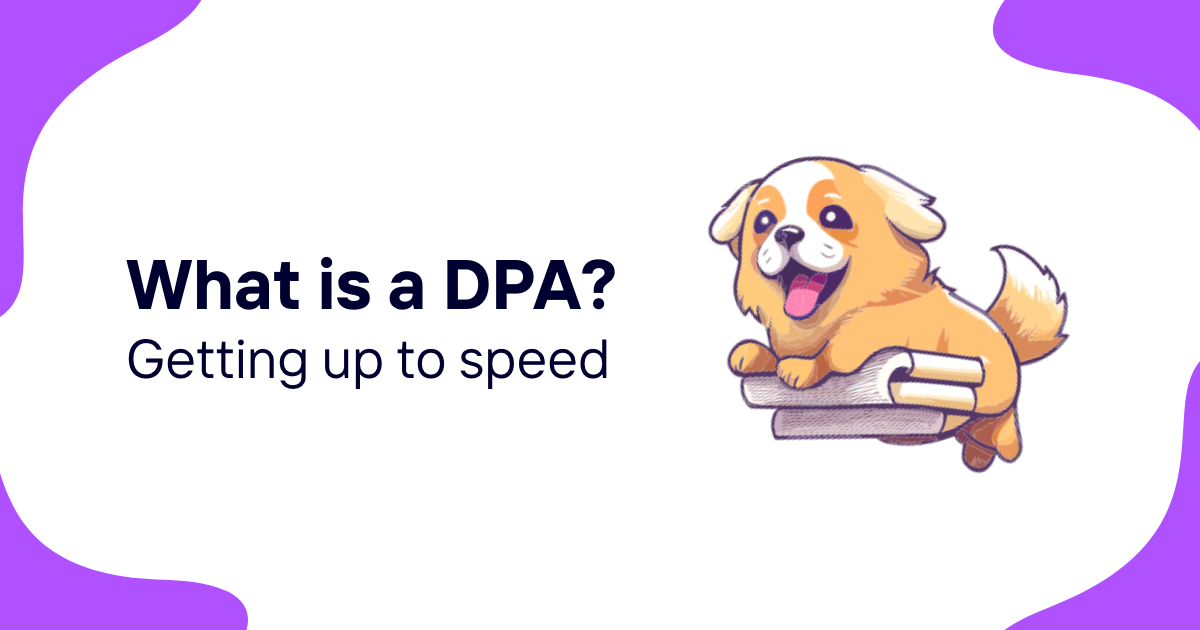Navigating the maze of GDPR principles can feel overwhelming, but understanding them is crucial for your business's compliance and integrity. One principle, in particular, stands out for its direct impact on how you handle data: the principle of data minimization. It's the golden rule that ensures you're only collecting and using the data you absolutely need.
Data minimization isn't just about protecting privacy; it's about building trust and streamlining your operations. In a world where data breaches are all too common, adhering to this principle can set you apart as a business that values its customers' privacy above all. Let's dive into why this principle is essential and how it shapes your data collection strategies.
Understanding GDPR Principles
In the digital age, protecting personal data has become paramount. The General Data Protection Regulation (GDPR) is a framework set by the European Union to ensure data privacy and security across Europe and beyond. One of the cornerstone principles you'll encounter is data minimization.
Data minimization mandates that you collect and use only the data absolutely necessary for the intended purpose. It's not just about limiting the amount of data but being precise about the kind of data you hold. This principle guides businesses to assess what information is truly essential and to discard anything that doesn't directly contribute to the specified purpose.
Why Data Minimization Matters
The rationale behind data minimization is multifaceted:
- Reduces Risk: The less data you hold, the lower your liability in the event of a data breach.
- Builds Trust: Customers are increasingly concerned about privacy. Showing that you collect only what you need demonstrates respect for their privacy.
- Streamlines Operations: Collecting unnecessary data clutters your systems, complicating data management. Focusing on essential data simplifies these processes.
Implementation in Your Business
Implementing data minimization requires a thoughtful approach:
- Audit Your Data: Regularly review the data you collect and hold. Determine if each piece of data serves a current and lawful purpose.
- Limit Access: Ensure that only personnel who need access to certain data have it. This minimizes the risk of misuse.
- Update Policies: Reflect your commitment to data minimization in your privacy policies and internal procedures.
Adapting to the GDPR's data minimization principle might seem challenging, but it offers a clear pathway towards more ethical, efficient, and secure data practices.
The Significance of Data Minimization

In the digital realm, the principle of data minimization stands as a cornerstone of the General Data Protection Regulation (GDPR). Data minimization requires that only necessary data for explicitly stated purposes is collected and used, ensuring that your operations stay on the right side of privacy laws. This principle safeguards both individuals and organizations from potential data breaches and misuse, highlighting its paramount importance in today’s data-driven landscape.
At its core, data minimization champions the idea of "less is more". By collecting only what you need, you mitigate the risk associated with data storage and processing. This not only enhances security but also ensures that your organization remains compliant with GDPR regulations. The rationale behind embracing data minimization is multi-fold:
- Risk Reduction: Minimizing the amount of personal data collected drastically reduces the risk of it falling into the wrong hands.
- Customer Trust: Demonstrating commitment to privacy builds a robust foundation of trust with your customers, showing that you value and protect their data.
- Operational Efficiency: Handling less data means your systems are less cluttered, making data management and protection more straightforward and cost-effective.
Implementing data minimization isn't just about following a legal requirement. It's about adopting a mindset that values privacy and efficiency, aligning your data practices with ethical standards that benefit everyone involved. Regular audits of collected data, restricting access to essential personnel only, and updating privacy policies to reflect a commitment to minimal data collection are practical steps towards this goal.
Remember, adapting to GDPR’s data minimization principle doesn’t simply keep you in compliance—it propels your organization forward by fostering a culture of respect for privacy and data security.
Data Minimization: Collecting and Using Only What You Need

When diving into the world of GDPR, one principle stands out for its direct impact on how businesses operate: data minimization. This principle mandates that you collect and use only the data that's absolutely necessary for the specific purposes you've outlined. It's not just a suggestion; it's a strict regulation that shapes the way personal data is handled across the EU and beyond.
Understanding data minimization begins with recognizing its dual purpose: protecting users' privacy and simplifying data management for organizations. By limiting the data collected to what's strictly necessary, you're not only complying with GDPR but also streamlining your data processing activities. This not only reduces the risk of data breaches but also decreases storage costs and simplifies data management.
Here's a quick overview of what embracing data minimization looks like in practice:
- Conduct regular data audits to identify unnecessary data that's being collected.
- Restrict access to personal data to only those within the organization who need it to perform their job functions.
- Update privacy policies to clearly communicate the specifics of data collection and use to your customers.
Implementing these steps can seem daunting at first. However, the benefits of data minimization extend far beyond compliance. By adopting this principle, you're not just following a regulation; you're also building a foundation of trust with your customers. In today's digital age, where data breaches are all too common, demonstrating a commitment to data privacy can significantly enhance your brand's reputation.
Moreover, data minimization principles encourage a more efficient use of resources. With less data to store, analyze, and protect, your operational efficiency can significantly increase. This lean approach to data management resonates with the growing trend of minimalist business practices, emphasizing efficiency and effectiveness over the sheer volume of data collected.
Importance of Data Minimization for Privacy and Trust

In the digital age, your personal data is more valuable than ever. Companies seeking to comply with the General Data Protection Regulation (GDPR) must embrace the principle of data minimization. Data minimization is critical not just for legal compliance, but for maintaining client trust and safeguarding privacy.
At its core, data minimization ensures that only necessary information is collected for a clearly defined purpose. This might seem straightforward, but it requires a disciplined approach to data management and a shift in how companies perceive data collection. Instead of the 'more is better' approach, you're encouraged to think 'less is more'. By limiting data collection to what is essential, you're not only adhering to GDPR but also building a foundation of trust with your customers. They'll know that their information isn't being collected indiscriminately, but with purpose and care.
The benefits of adopting data minimization practices extend beyond building customer trust. They also significantly reduce the risks associated with data breaches. Think about it: the less data you hold, the less you stand to lose in the event of a security incident. This isn't just a matter of reducing potential harm to your customers; it's also about protecting your organization's reputation and financial stability.
Implementing data minimization can be a challenge, but it offers an opportunity to review and streamline your data collection processes. By doing so, you’re not just ticking off a compliance checkbox. You’re also enhancing operational efficiency and paving the way for more transparent, trust-based relationships with your clients. In today's data-driven world, those are competitive advantages that can't be underestimated.
Implementing Data Minimization in Your Business

Adopting data minimization isn't just about compliance; it’s a strategic move that can set your business apart. The principle that mandates you to only collect and utilize what you need is fundamental, but how do you implement it effectively in your operations? Let’s breakdown the process into manageable steps.
Firstly, assess your current data collection practices. Take a close look at what you're gathering from your customers and why. Are all the pieces of information essential for your business purposes, or are you hoarding data "just in case"? This assessment should be thorough, questioning the necessity of each data type you collect.
Secondly, establish clear policies that define what data you collect, how you use it, and how long you retain it. These policies should not only exist but be communicated to your team and your customers. Transparency builds trust, ensuring your customers understand their data is treated with respect and care.
Moving on, adopt privacy by design in your product development. This means considering data protection and minimization from the very beginning of any project or new business initiative. Incorporating these principles early on prevents the need for costly modifications later and ensures compliance is baked into your products and services.
Lastly, conduct regular audits of your data practices. Technology and business needs evolve, meaning what was necessary a year ago might not be relevant today. Regular audits help ensure that you stay compliant and that data minimization principles are continuously applied throughout your operations.
By adopting these measures, data minimization becomes more than a compliance checkbox. It turns into a valued business practice, enhancing efficiency and fostering stronger relationships with your customers.
Conclusion
Embracing the principle of data minimization isn't just about adhering to GDPR requirements—it's about reshaping how you view and handle customer data. By assessing your current practices and implementing strategic policies, you're not only complying with the law but also paving the way for more efficient operations and stronger customer trust. Remember, in today's digital age, less is often more. By collecting only what you need, you safeguard your business against data breaches and build a foundation of respect and transparency with your customers. Let data minimization be the cornerstone of your privacy strategy, and watch your business thrive in the era of data protection.












